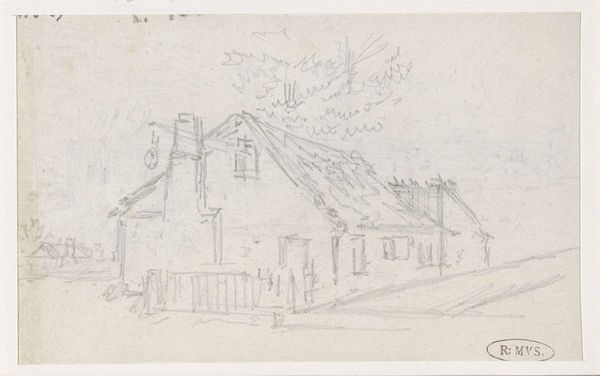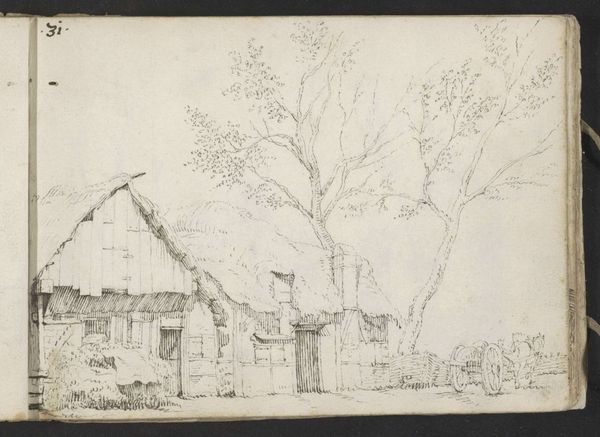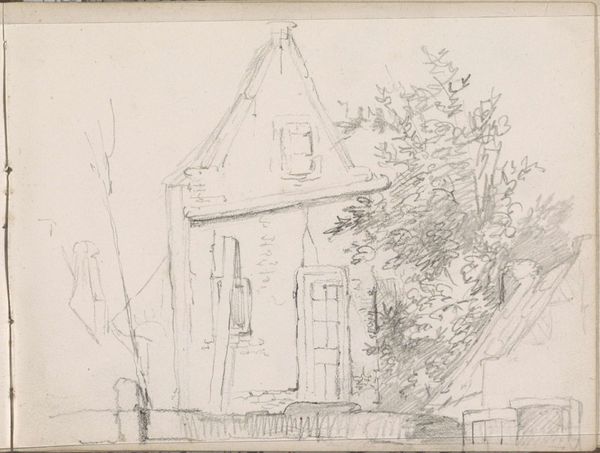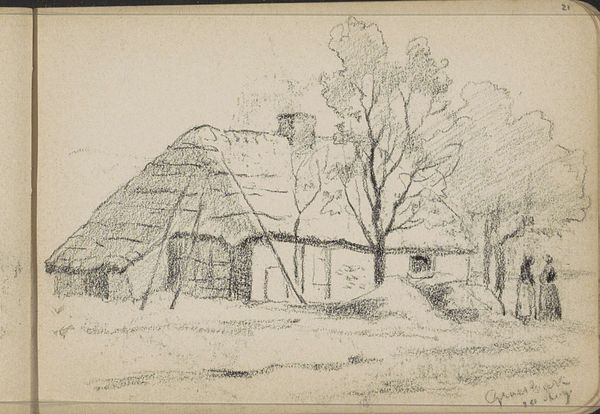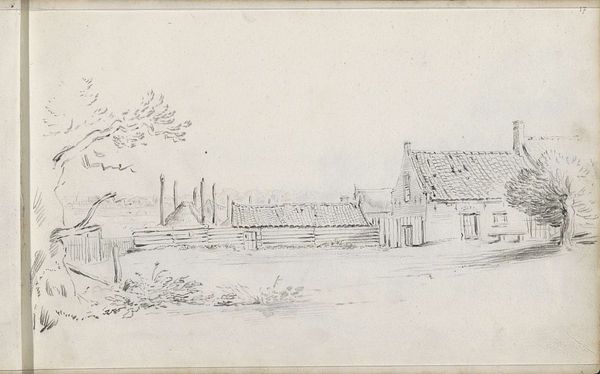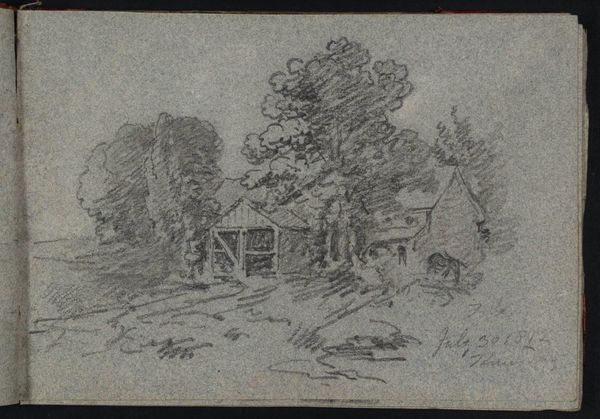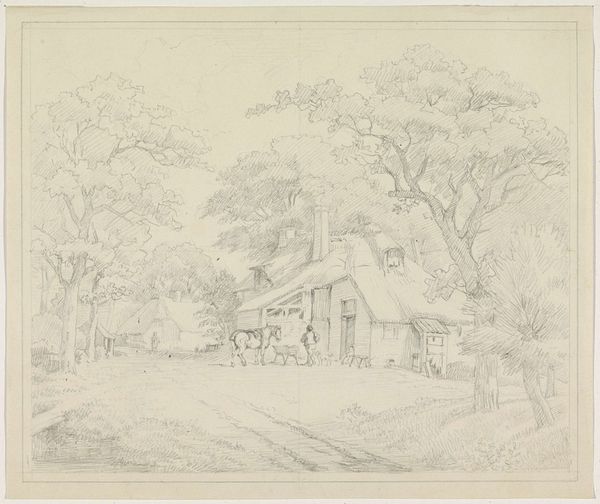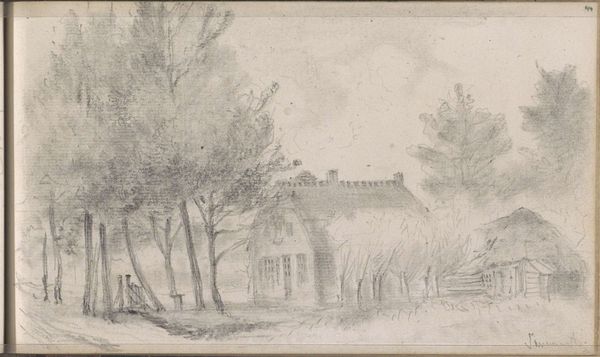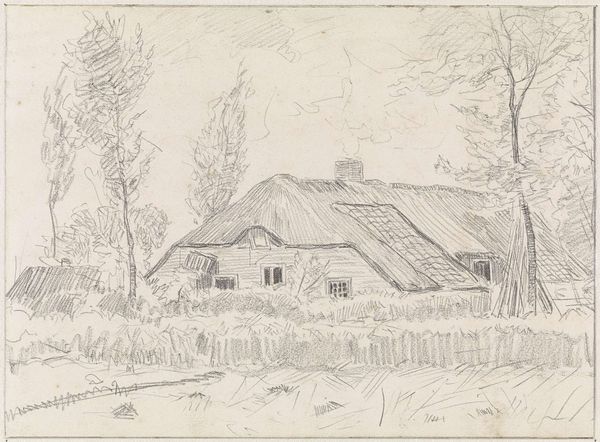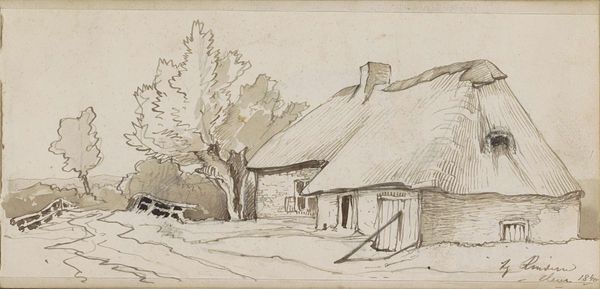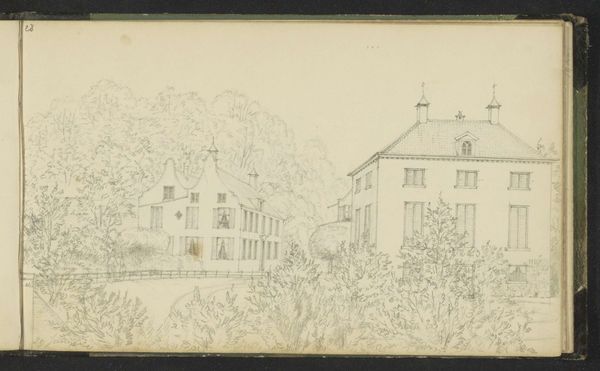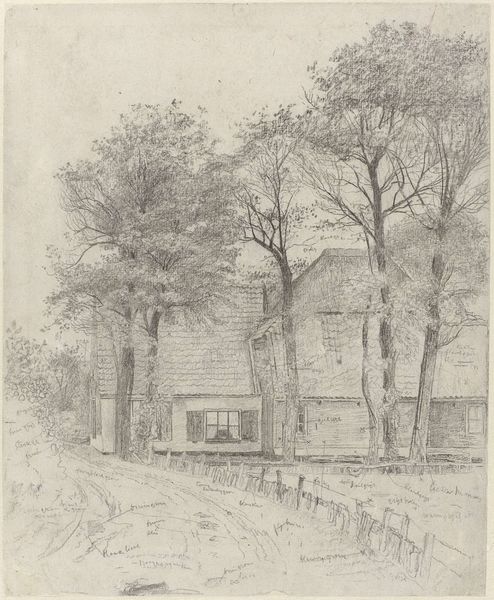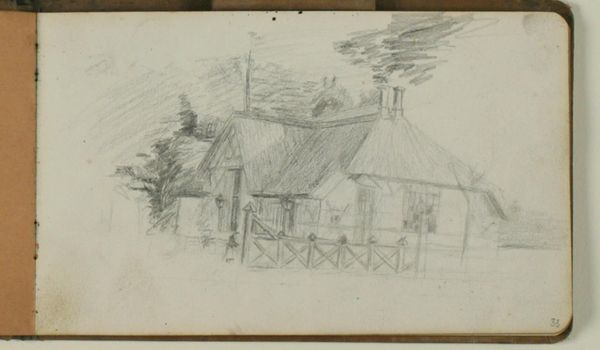
Copyright: Rijks Museum: Open Domain
Curator: Before us is "Jachthuis Sneppenschrik," a pencil drawing created between 1864 and 1868 by Johannes Tavenraat. It's part of the Rijksmuseum collection. What are your first thoughts? Editor: There's an ethereal, almost dreamlike quality. It feels incredibly immediate. Like a captured moment in time. Is that structure just a hunting lodge? Because the details—especially the delicate shading—almost elevate it beyond function. Curator: In considering such a commonplace rural architectural scene—and I want to underscore its status as Romantic landscape art—we have to factor in a rapidly transforming Netherlands, one experiencing intense urbanization, and deeply unequal colonial trade expansion that helped to enable leisure pursuits and collecting, to which a hunting lodge can be tied. This location thus participates in broader class-based historical, spatial narratives, tied to specific labor systems. Editor: I see what you're getting at. The means of making—pencil on paper—speaks to the accessibility of art, even landscape sketches like these. Tavenraat's labor of close observation then filters into our own act of witnessing as an art-viewing experience. This isn't just an image; it is an indexical product made through someone’s focused efforts. I also note how much the textures matter – it’s interesting how he renders wood grain in certain spots but elsewhere prioritizes depicting the effects of light filtering through leaves. Curator: Right, and how the interplay between nature and architecture, sketched as the Romantic sublime, might have obscured, in their time, a different story, where industrializing class structures had actually brought unprecedented change to Dutch society, especially at sites that existed at the margins, for leisure pursuits like hunting. Tavenraat here presents a scene that obscures more troubling, relevant social details related to land usage and economics. Editor: Precisely! It's a valuable reminder to reflect on both the making and how what's made reveals so much more about those times. Curator: Yes, and it offers a layered lens through which to contemplate both the idyllic surface of artistic representation and its embedded socioeconomic implications for that period. Editor: Exactly—I am left here pondering the way the physical aspects—the sketching itself, the landscape genre and labor required to create the piece—combine to convey a rich, though partial, view of a world long past.
Comments
No comments
Be the first to comment and join the conversation on the ultimate creative platform.
